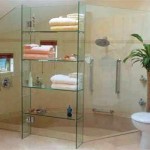It is at the same time difficult and easy to answer the question about how toilets work. It is easy because all the toilets have a certain function in common and there is no rocket science in it. And it is difficult because different companies have engineered the internal parts of the toilet differently. According to the expert, there are basically three main parts of the toilet that can be different in different toilets but they are there as a system that works together.
These three parts are:
- The bowl siphons
- The flush mechanism
- The refill mechanism
Let’s see each part of the toilet separately so that we can reveal the secrets of the toilet that how it works.
1. The Bowl
If you can somehow manage to disconnect the tank, the only thing that will left will be the bowl in your bathroom and interestingly you can still have toilet. There will be no moving parts of the toilet but the bowl is designed to solve all the problems that a toilet faces. The bowl is basically a reservoir of the water that has an open bowl and an internal P-trap. The upstream area of the trap way holds the water when the bowl is full. While down stream of it doesn’t holds the water, and lets the water to flow and to drain. When the bowl is filled with water till the top of the upstream trap way the bowl doesn’t hold and floods with water. The air in the lower part of the trap way pushes down the drain and then water takes its place. Even the downstream tray doesn’t hold the water and it let the water to flow freely.
The crucial mechanism available in the bowl is the bowl siphon. To understand how siphon works, take a cup of water and then pour it in to the bowl. You will examine that nothing has happened. You can even pour 25 cups of water in the toilet but the level of the water will not rise. This is because when you pour the cup of water in the bowl, the water level rises in the bowl but the extra water immediately spills out of the siphon tube. You can even do this experiment with a bucket of water. Pour it in to the bowl and you will see that this amount of water causes the bowl to flush and all the water is sucked out of the bowl. This is because that you have poured enough water to fill the siphon tube and once its filled the rest of the process will be automatic. The siphon will suck the water out of the bowl and when it will get empty it will produce a gurgling sound because of the air that will enter the siphon. The basic purpose of doing this is to let you know that you can still flush the toilet even when the water supply to your toilet is cut off.
2. The Flush
In the modern toilets, there is a tank behind the bowl and the main task of this tank is to act like the bucket of water that we have mentioned above. It stores enough water to activate the siphon. It usually takes 30 to 60 seconds to get filled and on flushing it, the water takes three seconds to get completely dumped in to the bowl. Inside the tank there is a chain attached to the handle on the side of the tank. This is basically the handle that we push or press to flush the toilet. What happens after pushing the handle is that it pushes the chain that is connected to the flush valve. The flush valve goes out of the way and let the water to move through the uncovered hole. Mostly the bowls of the toilets are molded so that water enters the rim and drains through the holes of the rim. This way a good portion of water flows down the larger hole. This large hole is basically known as siphon jet and it releases most of the water to the siphon tube.
As mentioned above that the water enters the bowl within three seconds, it is enough to activate the siphon and to drain the water and waste out of the bowl.
3. The Refill Mechanism
Now you have flushed the water and all the waste is now drained. The bowl of the toilet flushes when we pour enough water to activate the siphon effect. Once the tank gets empty, the flush valve that goes out of the way when we pressed the handle, now come back to its position and covers the hole of the tank. The drain hole gets occupied so that the tank can be refilled. Now the refill mechanism gets activated and it fills the tank back with enough water that can be used for the next process. There is another valve in the tank that turns the water on and off. Once the drain hole gets covered this valve allows the water to enter the tank. Some of the water goes to the refill tube while the other goes to the bowl refill tube. The first refill tube refills the tank and the other tube refills the bowl slowly. With the increase in the water level in the tank the float also starts to rise. This float eventually rises high enough to turn the valve of and then no further water enters the tank. But what if the float gets detached? Theoretically it will flood the bathroom but there is an overflow tube to prevent this from happening. This tube directs the extra water to the bowl instead of letting it go to the floor.
This is how the modern toilets works. Although it is a simple process but many of us were not educated about it. Although we cannot do the work of the plumbers but now whenever our toilet will show some kind of misbehavior we can describe it to the plumber. We can address the plumber about the main cause of the problem and we can definitely save much. Basically, the flush toilets were invented by the English plumber Thomas Crapper but searching through the records you will find many that relates to the toilet and its mechanism. Although toilet is the least glamorous invention of all but just imagine living without it. Forty percent of the world population is literally facing this situation and lacks basic sanitation. Although Japan has some of the amazing electronic toilets that can even do the opening and closing of the lids for you and can play the music while you use them. The toilets are also getting better but the basic idea of the toilet will remain the same. There might be a new mechanism introduced in the future but the main idea will be the same.










